Hill End Village is the living remains of an 1870’s era mining township. During the peak of the gold rush it had several thousand residents, and was the base for dozens of mining operations. As with many of these places, however, it’s population boomed, and then busted when then rush was over just a few years later. Hill End is located about 75km north of Bathurst, and while the drive isn’t particularly challenging it is quite remote. The drive along the Turonvale Road was more scenic than the more normal road through (past) Sofala, but definitely windier.
There are very few options for purchasing food or supplies in the village. Sofala might be the nearest location. The information we saw indicated that the local pub did have a restaurant. The general store had some cafe-style options, but the range seemed limited. We brought our own lunch so it wasn’t a problem for us. There were no fuel options or EV charging options that we noticed.
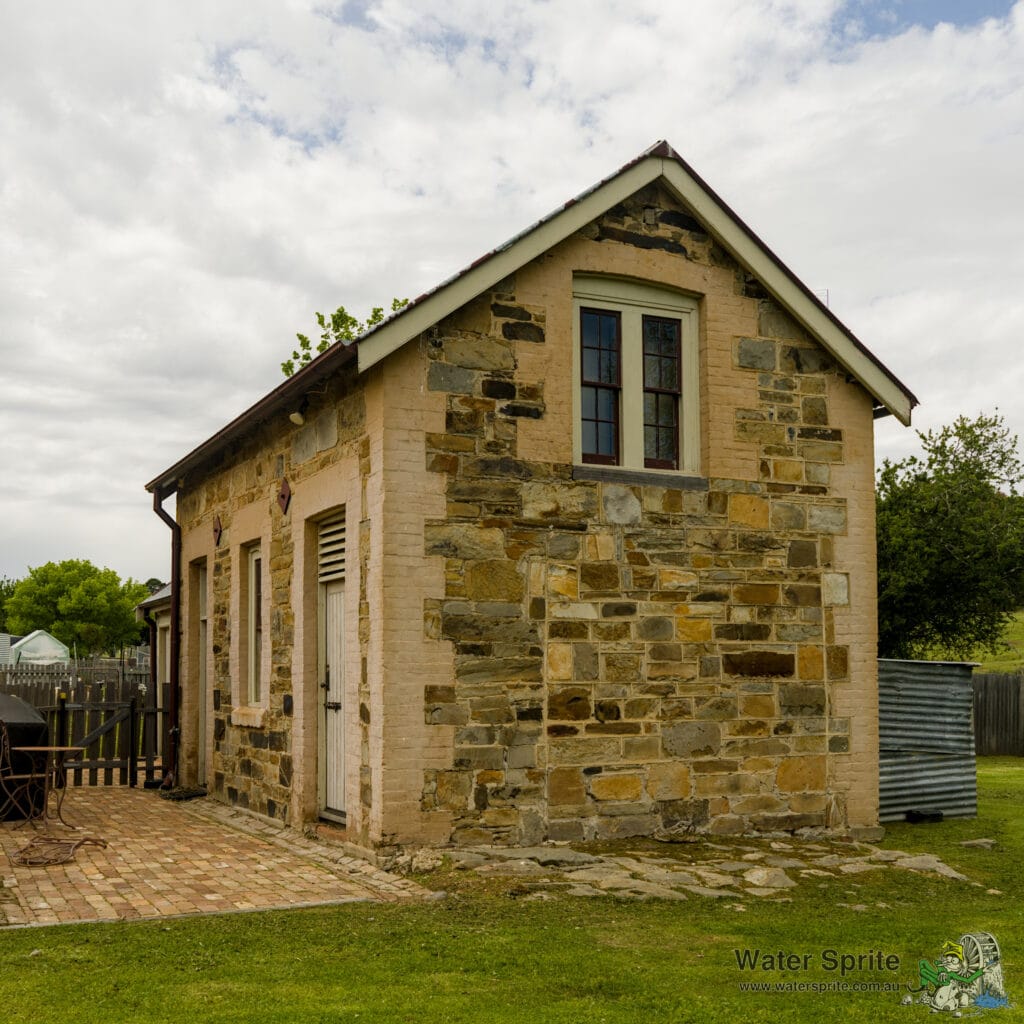
Sony A7Rv with Sony FE 24-70mm F2.8 GM II lens @ 29mm. 1/320s, f/13.0, 50 ISO.
However, the village lived on. Many of the buildings from its heyday were abandoned and subsequently destroyed, but those still in use by the village survived. During the 1960s, a group of artists (of the painting type) took up residence. They found it’s peaceful nature and scenery inspiring, and thanks to their efforts, the village got a fresh shot of life. The village is now managed by the NSW National Parks Service. Many of the surviving buildings leased out either as shop space or holiday accommodation.
The busts
The gold mine with no gold
Not everyone who came to Hill End struck gold. The Bald Hill mine only ever returned very minuscule amounts of gold, and was never a profitable mining operation. Ironically, however, it is a mine that has survived, and is open on weekends for guided tours once per day. We were not there on a weekend, so could not see inside. To be honest, I’m not sure what they were thinking when they established it. Even I could tell that the geology bore little resemblance to surrounding gold-bearing locations. The story goes that when the mine licencing people granted the licence, they predicted diamonds were more likely to be found than gold. Sadly no diamonds were found either.
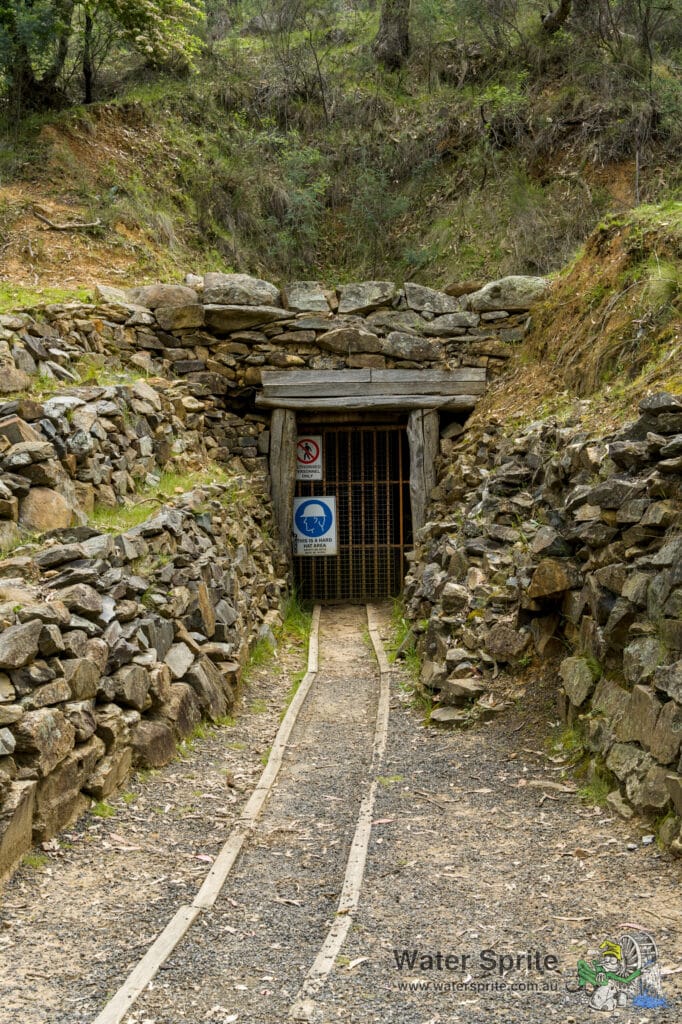
Sony A7Rv with Sony FE 24-70mm F2.8 GM II lens @ 50mm. 1/50s, f/18.0, 250 ISO.
The crusher with no ore to crush
Not far from the Bald Hill mine, another story of unrealized potential unfolded. Builders constructed a quartz crushing plant at considerable expense and effort. They dammed the Hill End Creek to supply water for the plant, touting its location as ideal for that reason. However, transporting the ore from the mines proved too difficult, and the plant never turned a profit. Workers relocated the machinery elsewhere, and most of the buildings vanished without a trace.
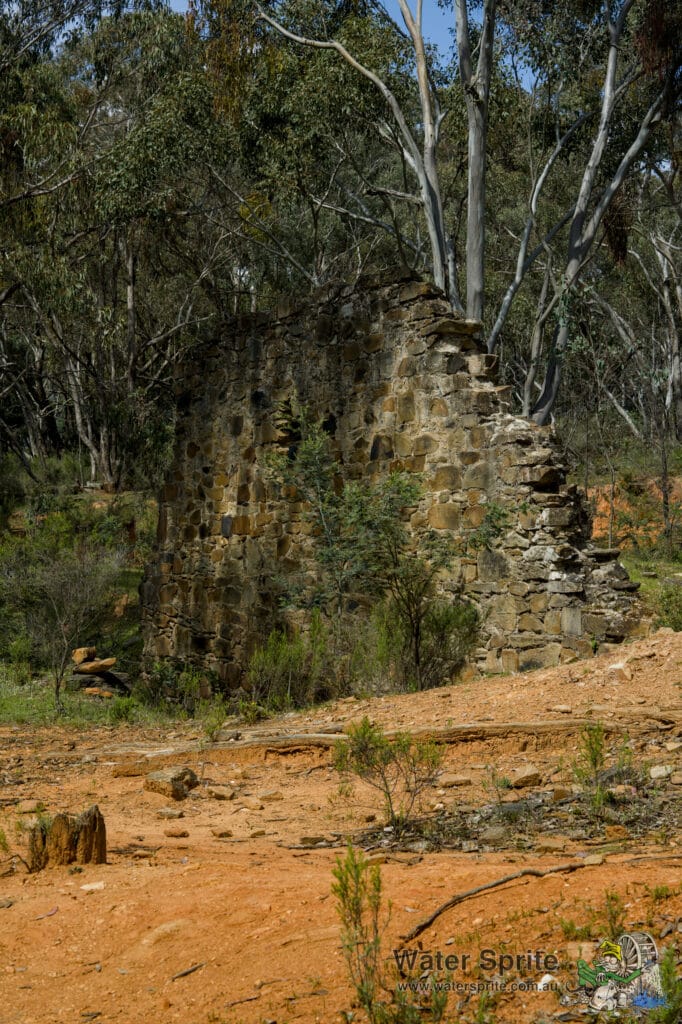
Sony A7Rv with Sony FE 24-70mm F2.8 GM II lens @ 70mm. 1/250s, f/11.0, 100 ISO.
The gold
Gold was found in several regions near the village, including a large alluvial goldfield to the north. However, most of the major mining operations were located to the south in Nuggety Gully. The best view of this area comes from the Beaufoy Merlin lookout, which requires a bit of a drive from the village. To be honest, there isn’t much to see. A visibly denuded section of the gully wall remains, along with the ruins of a few structures. I’m not sure if the site is accessible or even safe to access up close.
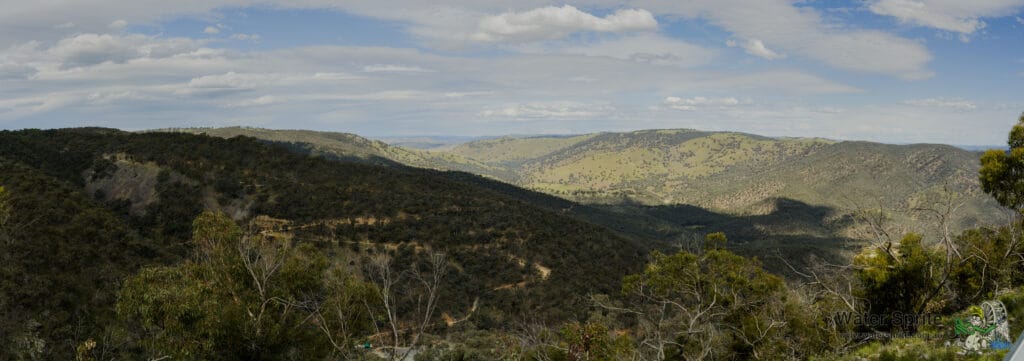
9 image panorama. Sony A7Rv with Sony FE 24-70mm F2.8 GM II lens @ 42mm, f11.0. Stitched with Hugin Panorama software.
The churches
I could tell you a story about a war between churches that turned very nasty and led to a church being blown up. However, that wouldn’t be true—not the war part, anyway. Yes, a church was blown up.
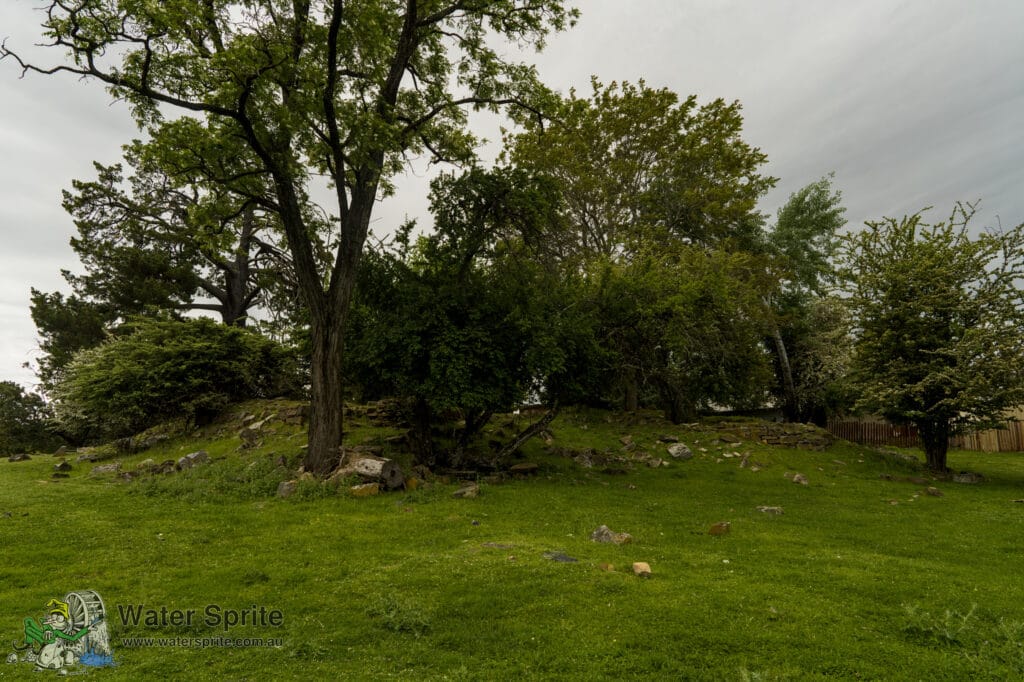
Sony A7Rv with Sony FE 24-70mm F2.8 GM II lens @ 24mm. 1/60s, f/13.0, 50 ISO.
If I remember correctly, in the 1960s, authorities decided the Anglican church building was no longer safe. Despite being a fairly substantial stone structure, movement within the walls had made it unstable. So much so, that they feared a collapse was imminent. To prevent it from collapsing on someone, they decided to blow it up. The pile of rubble is all that remains.
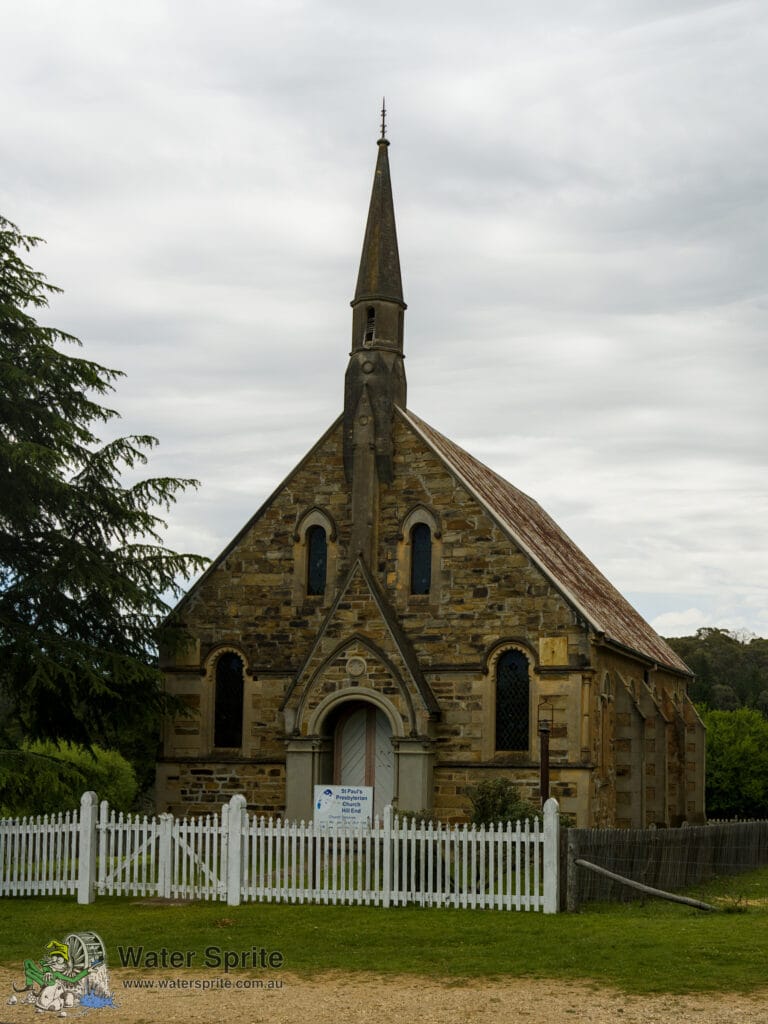
Sony A7Rv with Sony FE 24-70mm F2.8 GM II lens @ 34mm. 1/250s, f/13.0, 50 ISO.
The Presbyterian church over the road, however, had no such issues, and continues to house church services to this day. But the pile of rubble on the other side of the street was not a result of a successful attack by the Presbyterian church. No matter how appealing that story may sound!
Other images





Links
Disclaimer
We visited Hill End as members of the public. All information was sourced from on-site information signage and from conversations with locals. We did not seek, and were not given, privileged access to any part of the site. Many buildings on this site are still occupied; please exercise discretion and to respect the privacy of the people who live and work in this village.
The views expressed in this post are mine and mine alone, and any errors in it are also all mine. Any recommendations made in this post are unpaid and are based entirely on my experiences during my visit. Your experience may differ, and I cannot be responsible for that.
Leave a Reply